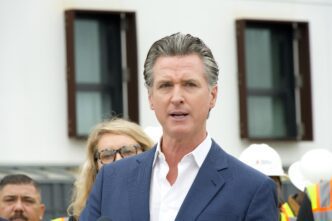Despite significant growth in population, government spending, and national debt over the past 40 years, the U.S. federal workforce has remained relatively stable. This anomaly challenges the common belief that federal employment expanded in tandem with governmental financial activities.
The U.S. population has increased by roughly 100 million people since the early 1980s, contributing to a rise in government spending from about $900 billion in 1984 ($2.7 trillion in today’s terms) to over $7 trillion in 2024. Concurrently, the national debt has surged from under $1.6 trillion to more than $35.5 trillion. As these figures indicate significant changes, there is a noticeable discrepancy in the perceived growth of the federal workforce, which has largely remained static.
Vivek Ramaswamy, born in 1985, alongside Elon Musk, is working on a commission focused on enhancing government efficiency. This group’s attention on possibly reducing the size of the federal workforce by terminating recent hires highlights a notable inquiry into federal employment numbers.
Contrary to popular belief, the number of federal employees, which includes postal workers, has not drastically increased. From approximately 2.96 million in the mid-1980s to just over 3 million today, the figures reflect minor fluctuations rather than large-scale expansions. This constancy persists despite significant drawdowns in military personnel during the George H.W. Bush and Bill Clinton administrations.
Each year, between 250,000 and 300,000 new civilian workers join the federal workforce, while a similar number depart, maintaining a steady workforce size. According to Peter Morrissey, senior director at The Volcker Alliance, the static number of federal employees carries more responsibilities over time, as governmental obligations have multiplied.
The federal workforce does not predominantly reside in Washington D.C.; rather, 80% of employees are distributed throughout various states such as California, Texas, and Colorado. Jenny Mattingley from the Partnership for Public Service suggests focusing on improving service delivery without unnecessarily reducing government size.
Elaine Kamarck from the Brookings Institution describes the U.S. government as a ‘giant holding company,’ involved in diverse activities from pilot training to food safety inspections. Recommendations to cut newer hires may deter future applicants and disrupt current operations, such as those required for recent infrastructure initiatives.
Recurring federal programs and roles often persist even after their primary objectives have diminished, a situation pointed out by Rep. James Comer, reflecting long-standing bureaucratic inertia. Meanwhile, the use of contractors and employees reliant on federal grants continues to complicate the assessment of government size.
The Volcker Alliance’s study found that when including contractors, the federal workforce in 1984 surpassed 6.9 million employees, and this number has presumably increased with recent legislative expenditures. Although maintaining a stable headcount leads to greater reliance on contractors, this strategy can elevate costs. Discussions on modernizing and improving government efficiency present opportunities for bipartisan collaboration.
While the U.S. government has experienced dramatic financial growth, the size of its federal workforce has not mirrored this trend. These findings emphasize the need for thoughtful consideration of federal employment strategies, as well as the complexities involved in government size and efficiency.








